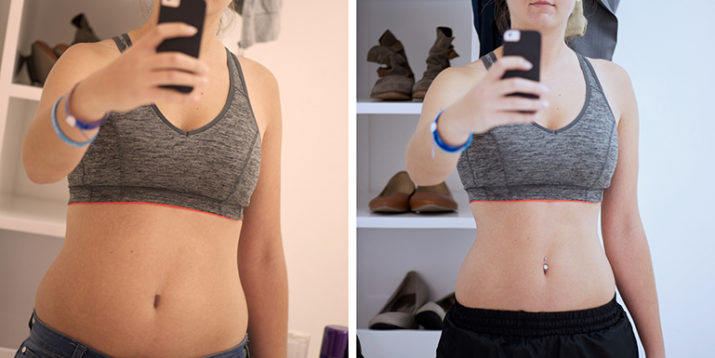What Happens to Your Body When You Lose Weight

You’ve been putting in the hard work — eating right, exercising consistently — and now you’re seeing the fat melt off and muscles emerge in its place. But have you ever wondered what’s happening to your body when you lose weight?
Find out all the amazing and complex things that are occurring in your body when you transform yourself from couch potato to lean, mean fighting machine!
Weight Loss 101
The fundamental principle behind weight loss is dead simple: Burn more calories than you consume. Restricting calories forces your body to draw on existing fat stores to power your bodily functions, everyday activities, and workouts.
Since your weight is essentially a form of stored energy (read: calories), it will gradually shrink and your body will shrink with it — in a good way, of course.
The first step of your weight-loss journey is figuring out your ballpark calorie goal. Most Beachbody programs come with a calculator that you can use to figure out how many calories you should be eating, or you can also use this handy online calculator.
A Google search will also reveal many different formulas to help you tally up calories for BMR, activity, and exercise, but there’s one method to calculate “calories for weight loss” that refuses to die:
It’s called the 3,500 Calorie Rule, which basically states that if you cut 3,500 calories from your diet per week, you lose one pound. Simple, right? Not exactly.
This general guideline has been shown to underestimate multiple factors and may set up unrealistic expectations. Because in reality, your body will eventually fight back against weight loss. Your brain knows why you’re cutting calories, but your body doesn’t, so it does everything it can to conserve energy. (think: slowing metabolism).
How Much Weight Can You Lose in a Week?
Experts recommend you lose weight at a steady one to two pounds per week. But you may experience more than that during the “honeymoon phase” at the start of your weight-loss journey because you’re highly motivated and your body hasn’t adapted to the changes you’re imposing on it — yet.
What’s Happening in Week 1
You’ve picked out a solid strategy to lose weight by establishing healthy habits, following a balanced nutrition plan, and working out regularly.
All of this helped you create a calorie deficit for most days of the week. Sensing this but still want to give you the energy you need, your body breaks down its sources of stored energy, most of it fat, but some of it glycogen.
Glycogen is a storage form of carbohydrates mostly found in your liver and muscles. It’s broken down into glucose when your blood sugar dips or if you exercise intensely. Glycogen is stored with water and when it’s converted to glucose for your body to use, the water goes with it, which is why most people experience rapid weight loss in the first week.
Depending on how much weight you have to lose and how severely you restrict your food intake, this rapid loss of fluid will vary. But don’t be worry — you’re still losing some of this weight as fat!
What’s Happening in Month 1
In the first month, you’re losing it all: fat, water, glycogen, and even muscle tissue, depending on what activities you’re doing to lose weight. As you slim down, individual fat cells get smaller and smaller. The fats stored in the cells are shipped out and metabolized as fuel by your internal organs. This involves a series of chemical reactions where energy is extracted at each step.
So, where does the fat actually go? The end waste products of this reaction are carbon dioxide and water, so you’re actually breathing most of it out, with the rest leaving your body via urine, sweat, and other bodily fluids.
But what about those darn fat cells? Sorry, folks, but you’re stuck with them. Everyone’s body contains a set number of fat cells. When they get smaller, they release less leptin, the hormone that tells your body that it’s full. And when your leptin levels dip, that means your tummy starts rumbling for more grub.
Sadly, this is one of many factors that make losing weight challenging. But there is a solution: Add more fiber (think: fruits, veggies, whole grains) and lean protein to your diet. These types of food will help you feel more satiated.
Another challenge: During this time, you may also drop pounds in the form of muscle mass, which is definitely something you don’t want to lose. The solution: Include a consistent strength-training routine as well as high-intensity interval training to your weight-loss plan to help maintain muscle mass.
The Takeaway
Complex math, biology, and physiology aside, remember not to lose sight of the bigger picture: Everything that you’re doing is in service to your overall health and happiness. So don’t sweat the details (too much) and focus on creating a healthy, sustainable lifestyle.


